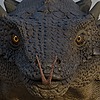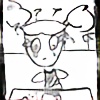HOME | DD
 VikasRao — Draconology - Venom pt 2
VikasRao — Draconology - Venom pt 2

#anatomy #anatomydrawing #anatomystudy #bestiary #biology #creaturedesign #diagram #digitalart #draconology #dragon #fantasyart #fantasycreature #illustration #lindwurm #mythicalcreature #reptile #sciencefantasy #sciencefiction #sciencefictionfantasy #scifi #venom #wyrm #wyrmling #wyrmdragon #speculativeevolution #speculativebiology #speculativezoology #specevo
Published: 2021-06-05 15:59:40 +0000 UTC; Views: 51239; Favourites: 315; Downloads: 0
Redirect to original
Description
Draconology © VikasRao
Please do not copy, redistribute, reference, trace, reuse, alter or modify for your own use without my prior permission, thank you!
The second part of venom anatomy. Wanted to finish this up before moving on to more posts (coming sooner rather than later)
………………………………………………………………………………………………………………………………………………………………………………………………………………………………………………………………………………………………………………………………………………………………………………………………………………………………………………………………………………………………………………………………………………………………………………………………………………………………………………………………………………………………………………………………………………
Venom among the parareptilian draconiformes appears to have evolved on 3 separate occasions: once in volanosauria (wyverns), once in the ophiosuchia (true wyrms) and once in the psammovermids (olgoi-khorkhoi), in contrast to the extant eureptilia wherein it appears to have evolved only once, in the toxicoferan squamates.
As the most diverse group of draconiformes, it's no surprise that the wyrms also show the greatest diversity of venom compositions and delivery mechanisms. Multiple lines of evidence show that wyrms aren't a true clade, but rather an evolutionary grade, consisting of ophiosuchia, psammovermidae, and the ventophiopidae (wind wyrms), among which the ventophiopidae are the only non-venomous group, while both the ophiosuchia and psammovermidae both independently evolved it, a fact that's further proven by the different arrangement of venom glands in each group.
The psammovermidae are an ancient group, today represented solely by the unusual olgoi-khorkhoi (Psammovermis carcharops), also called the sand wyrm or death wyrm. In contrast to other wyrms and wyverns, which have pleurodont teeth (teeth placed along the inner surface of the jawbone) this species possesses acrodont teeth (placed at the top of the jawbone), a condition also seen in pyrosaurian draconiformes (dragons & drakes), leading some to speculate whether they are basal pyrosaurians. Regardless of its phylogenetic affinities, one thing is for certain - the olgoi-khorkhoi possesses what is perhaps the most toxic venom of any draconiform, comparable to that of the Australian inland taipan. A lethal blend of neuro- and cytotoxins, the venom is powerful enough to bring down animals as large as camels in a matter of minutes, and smaller animals such as rodents & small reptiles in much less time. This venom is injected via 3 pairs of fixed hollow fangs, each similar to those of snakes. The venom is synthesised in a pair of venom glands located just behind the eyes, which, as with wyverns, are modified parotid salivary glands, which are encased in a muscular sheath allowing precise control over venom-delivery. Another pair of glands located just above the fangs - the supralabial glands - appear to secrete additional substances that are believed to act as a "tracer" of sorts, allowing the olgoi-khorkhoi to track down fleeing prey via smell should it fail to deliver an immediately lethal dose.
While the peacock wyvern (Avilacerta magnificens) has similarly toxic venom, it's largely specific towards mammals and birds, the wyvern's primary prey, whereas the olgoi-khorkhoi's venom has a far broader spectrum. It targets the nervous system, causing rapid muscle paralysis and cardiac arrest, while simultaneously destroying tissues resulting in massive necrosis and sepsis.
Ophiosuchians appear to have first evolved venom in the Paleocene, roughly 66-60 mya based on fossil and genetic evidence, and since then their venom and venom glands appear to have undergone numerous modifications over the course of evolutionary time, which is exemplified by the high degree of variation in venom gland morphology and physiology across the clade. In these wyrms, the venom is produced generally by 2 pairs of glands in the upper jaw - the larger supralabial glands & the smaller anterior glands. These are modified serous glands, but distinct from salivary glands.
The 2 superfamilies within the clade, Ouroboroidea & Ophiosuchoidea, split from each other during the Oligocene around 30-27 mya, fairly early in their evolution, and consequently show major differences in venom gland morphology.
In members of the ouroboridae such as the crested copperback wyrm (Ouroboros acanthocristus), the anterior venom glands have been lost entirely. As such the venom is synthesised entirely by the enlarged supralabial glands. These glands sit right above 2 pairs of double-grooved fangs, similar to those of some wyverns. These fangs aren't particularly efficient at venom-delivery, requiring the wyrm to bite and hold a prey item in order to inject venom. This isn't generally an issue as these wyrms tend to hunt small prey, and because many ouroborids also tend to be poisonous, rarely use metabolically expensive venom for defense, and as such very few species actually have venom that's lethal to larger animals.
The other ouroboroid family, the cerataspidae, have not only retained but also modified their anterior glands. Cerataspids such as the greater banded Uktena (Megacerastes tigrinus), the 2 pairs of glands are separated from each other by a septum, with seemingly limited admixture of substances. The 2 glands produce slightly different substances, that are injected separately via 2 pairs of long, hollow fangs. Each secretion seems to be capable of functioning independently as venom, but with slightly different effects (ex: neurotoxic & haemotoxic), with the combined secretion inducing multiple forms of toxicity. Cerataspids have some of the proportionally largest fangs of all wyrms, and are kept sheathed within "sockets" in the lower jaw. As with many snakes such as cobras & vipers, these wyrms employ a bite-and-retreat strategy, owing to their highly efficient fangs.
Among the Ophiosuchoidea, the venom system of the vermisaurids, such as the great lindwurm (Vermisaurus microlepis), appears to be the ancestral condition in true wyrms as a whole. In addition to clearly differentiated anterior and supralabial glands, they also possess a pair of mandibular venom glands in the lower jaw, which have been lost in other wyrms at a very early point in their evolution. They're also unusual among wyrms in that they do not possess true fangs, instead, all of their teeth have shallow grooves on their inner side to direct venom into the prey item. While lindwurm venom is generally extremely potent, the unspecialised teeth mean that venom delivery is quite inefficient, necessitating a bite-and-chew strategy to ensure effective envenomation.
The venom systems of the dolichovaranidae & ophiosuchidae share many similarities, but they appear to be a result of convergent evolution rather than shared ancestry. The anterior and supralabial glands are partly merged into antero-supralabial glands, due to an incomplete septum, and as such function more or less as a single gland even though they still produce different secretions. The combined secretion is injected as venom via 2 pairs of deeply grooved fangs. Ophiosuchids in general have proportionally larger glands than dolichovaranids, owing to their larger skulls. The fangs are more efficient at venom delivery than those of ouroborids and vermisaurids, but not as efficient as those of cerataspids, though their larger venom glands and larger resultant venom volume more than make up for this. A general trend across both groups is decreasing toxicity with increasing size, similar to many venomous snakes and scorpions. This is likely due to the fact that larger species are able to dispatch prey through sheer brute force alone, and reserve venom only for defence and/or larger, more dangerous prey.
Related content
Comments: 5

👍: 1 ⏩: 1

👍: 1 ⏩: 0

👍: 1 ⏩: 1




























